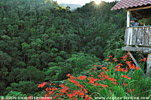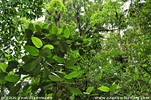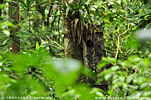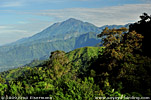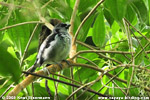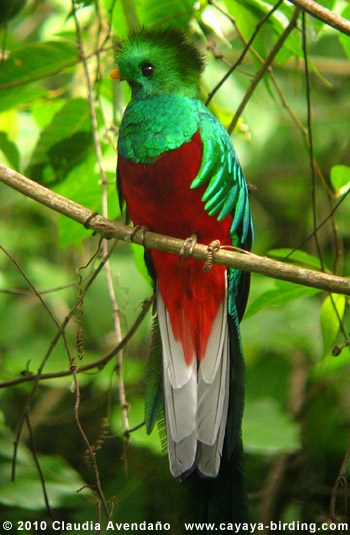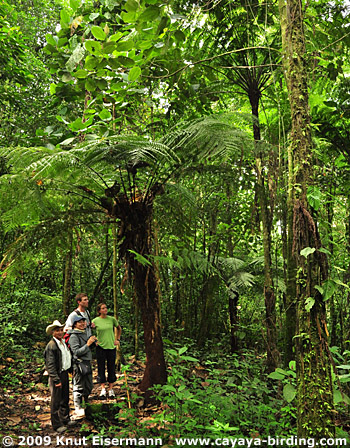San Rafael Pie de la Cuesta
San Rafael Pie de la Cuesta is located 13 km southwest of the town of San Marcos. Pie de la Cuesta is translated as at the foot of the steep slope, because the road winds up from San Rafael at 900 m to 2500 m (2,950 - 8,200 ft) in only 15 km.
The municipality of San Rafael Pie de la Cuesta manages a reserve called El Refugio del Quetzal, which is part of the Tacana-Tajumulco Important Bird Area (IBA GT013), designated by BirdLife International. The reserve ranges in elevation from 1800 to 2000 m (5905 to 6560 ft). The warm and humid uprising air from the Pacific coastal plain condenses in this altitude causing about 4000 m of annual rainfall and frequent fog, which nurtures the humid broadleaf forest of the reserve.
The forest of El Refugio del Quetzal harbors several avian gems. Cayaya Birding staff discovered in August 2009 a population of the Azure-rumped Tanager in the area. Other restricted-range species of northern Central America and southern Sierra Madre which we have recorded during our short visit include Highland Guan, Blue-throated Motmot, Green-throated Mountain-gem, Emerald-chinned Hummingbird, Rufous-browed Wren, Blue-crowned Chlorophonia, and Hooded Grosbeak. Several Yellow Grosbeaks were calling frequently in the forest canopy. Other typical highland forest birds were Common Bush-Tanager, Gray-breasted Wood-Wren, Paltry Tyrannulet, Spotted and Ruddy-capped Nightingale-Thrush, Brown-backed Solitaire, Cinnamon-bellied Flowerpiercer, Yellowish Flycatcher, Spot-crowned Woodcreeper, Emerald Toucanet, Ruddy and Scaly-throated Foliage-gleaner, and Elegant Euphonia, to name a few.
The reserve supports also a population of Resplendent Quetzals. Breeding season ranges from February to May, which is the best time to see them there. Local forest guards monitor nest locations and some pairs also nest in artificial cavities, made out of hollow pieces of trunks tied to a living tree. The forest is easily accessible along a newly made loop trail of about 1 km length. Smaller trails lead to parts farther away in the reserve.
Access and accommodation: San Rafael Pie de La Cuesta is accessible on paved road from San Marcos (about 20 km). Small hotels are available in town. All visits to the reserve need to be arranged in advance with the municipality.
Best season for birding in San Rafael Pie de La Cuesta? Any time of the year. For seeing Resplendent Quetzal: December-May.
How do you support conservation and development in San Rafael Pie de La Cuesta? El Refugio del Quetzal is part of the Important Bird Area Tacaná-Tajumulco (IBA GT013). With your visit you help to raise an environmental awareness among the local population.
